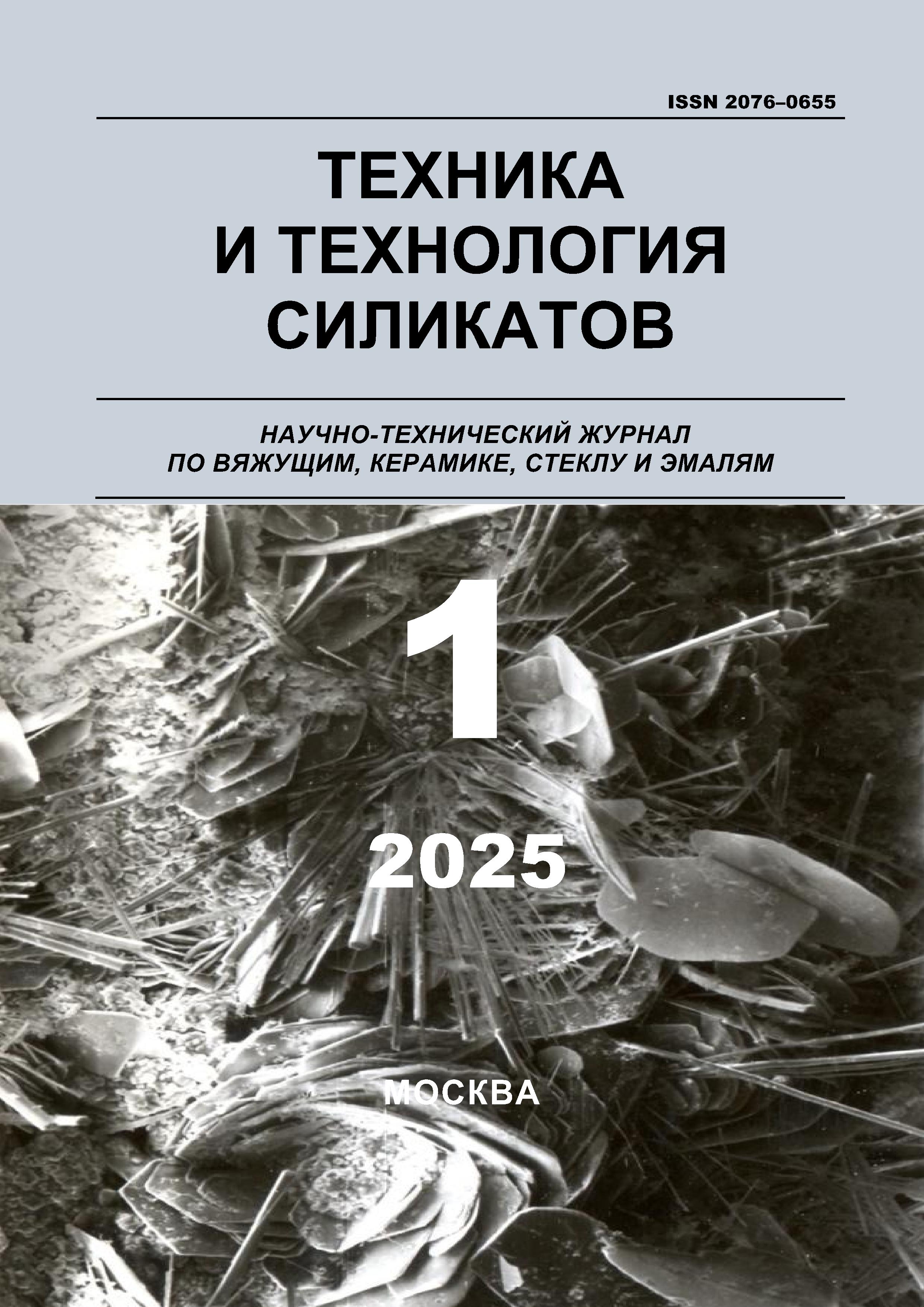employee
Moscow, Moscow, Russian Federation
employee
Moscow, Moscow, Russian Federation
employee
Moscow, Moscow, Russian Federation
employee
Moscow, Moscow, Russian Federation
UDC 666.942
CSCSTI 61.35
Russian Library and Bibliographic Classification 35
The article discusses the resource-intensive problems of cement and concrete production, which can lead to irreparable climate change. The authors show the need for sustainable and efficient methods to reduce CO2 emissions in the cement industry and move towards less carbon-intensive production. The article discusses a strategy for reducing CO2 emissions. The authors show that partial replacement of Portland cement clinker with Supplementary cementitious materials (SCMs) is currently the most easily achievable. The processes for the production and use of SCMs are analyzed in detail in terms of their impact on CO2 emissions, energy consumption and cement stone structure. In the paper, the use of heat-treated clays, marl, rice husks and wastewater treatment wastes are considered as supplementary binding materials to replace part of the clinker. The presented research results confirm that cements using such materials can reduce clinker content in cement up to 50% without loss of strength properties. The use of substandard clays, marl, rice husks and wastewater treatment waste will contribute to a closed-loop economy. The authors discuss the importance of further research on frost resistance, corrosion resistance and certification of cements and concretes based on Supplementary cementitious materials.
low-carbon cement, energy efficiency, supplementary cementitious materials, heat-treated clay, marl
1. Schoon J., De Buysser K., Van Driessche I., & De Belie N. Fines extracted from recycled concrete as alternative raw material for Portland cement clinker production // Cement and Concrete Composites, 2015. V. 58. Pp. 70–80. https://doi.org/10.1016/j.cemconcomp.2015.01.003.
2. Yu R., & Shui Z. Influence of agglomeration of a recycled cement additive on the hydration and microstructure development of cement based materials // Construction and Building Materials, 2013. V. 49. Pp. 841–851. https://doi.org/10.1016/j.conbuildmat.2013.09.004.
3. Kwan A. K. H., Ng P. L., & Huen K. Y. Effects of fines content on packing density of fine aggregate in concrete // Construction and Building Materials, 2014. V. 61. Pp. 270–277. https://doi.org/10.1016/j.conbuildmat.2014.03.022.
4. Paris Agreement - Status of Ratification [Elektronnyy resurs] // United Nations Climate Change, 2016: sayt. – URL: https://unfccc.int/process/the-paris-agreement/status-of-ratification (data obrascheniya: 03.09.2024 g.)
5. Passaro F., Boulle B., Burge L. Cementing the global net-zero transition. Prepared by Climate Bonds Initiative [Elektronnyy resurs] // Published by Climate Bonds Initiative, September 2023: sayt. – URL: https://www.climatebonds.net/files/reports/cementingtheglobaltransition.pdf (data obrascheniya: 15.09.2024 g.)
6. Technology Roadmap: Low-carbon transition in the cement indus-try [Elektronnyy resurs] // Agency and World Business Council for Sustainable Development, France 2018: sayt. – URL: https://www.iea.org/reports/technology-roadmap-low-carbon-transition-in-the-cement-industry (data obrascheniya: 15.09.2024 g.)
7. Ding T., & Xiao J. Estimation of building-related construction and demolition waste in Shanghai // Waste Management, 2014. V. 34 (11). Pp. 2327–2334. https://doi.org/10.1016/j.wasman.2014.07.029.
8. Puente de Andrade G., de Castro Polisseni G., Pepe M., & Toledo Filho R. D. Design of structural concrete mixtures containing fine recycled concrete aggregate using packing model // Construction and Building Materials, 2020. V. 252, 119091. https://doi.org/10.1016/j.conbuildmat.2020.119091.
9. Zhu P., Mao X., Qu W., Li Z., & Ma Z. J. Investigation of using recycled powder from waste of clay bricks and cement solids in reactive powder concrete // Construction and Building Materials, 2016. V. 113. Pp. 246–254. https://doi.org/10.1016/j.conbuildmat.2016.03.040.
10. Le, H.-B., & Bui, Q.-B. Recycled aggregate concretes – A state-of-the-art from the microstructure to the structural performance // Construction and Building Materials, 2020. V. 257, 119522. https://doi.org/10.1016/j.conbuildmat.2020.119522.
11. Zhang Y., Luo W., Wang J., Wang Y., Xu Y., & Xiao J. A re-view of life cycle assessment of recycled aggregate concrete // Con-struction and Building Materials, 2019. V. 209. Pp. 115–125. https://doi.org/10.1016/j.conbuildmat.2019.03.078.
12. Wen Z., Chen M., & Meng F. Evaluation of energy saving po-tential in China’s cement industry using the Asian-Pacific Integrated Model and the technology promotion policy analysis // Energy Poli-cy, 2015. V. 77. Pp. 227–237. https://doi.org/10.1016/j.enpol.2014.11.030.
13. Bashmakov I.A., Potapova E.N., Borisov K.B., Lebedev O.V., Guseva T.V. Dekarbonizaciya cementnoy otrasli i razvitie sistem ekologicheskogo i energeticheskogo menedzhmenta // Stroitel'nye materialy, 2023. № 9. S. 4-12. https://doi.org/10.31659/0585-430X-2023-817-9-4-12
14. Potapova E.N., Guseva T.V., Tolstyh I.O., Bubnov A.G. Tehnologicheskie, tehnicheskie i organizacionno-upravlencheskie resheniya dlya ustoychivogo razvitiya i dekarbonizacii cementnoy otrasli // Tehnika i tehnologiya silikatov, 2023. T. 30. № 2. S. 104-115. – EDN UMLFEJ
15. Activity Report [Elektronnyy resurs] // Cembureau the European Cement Association, 2020: sayt. – URL: https://www.cembureau.eu/media/1sjf4sk4/cembureau-activity-report-2020.pdf (data obrascheniya: 20.09.2024 g.)
16. Barbhuiya S., Kanavaris F., Das B.D., Idrees M. Decarbonising cement and concrete production: Strategies, challenges and pathways for sustainable development // Journal of Building Engineering, 2024. Vol. 86, 1. 108861. https://doi.org/10.1016/j.jobe.2024.108861.
17. Dinga Ch.D., Wen Z.. China's green deal: Can China's cement industry achieve carbon neutral emissions by 2060? // Renewable and Sustainable Energy Reviews, 2022. Volume 155. 111931. https://doi.org/10.1016/j.rser.2021.111931.
18. Lothenbach B., Scrivener K., & Hooton R. D. Supplementary cementitious materials // Cement and Concrete Research, 2011. V. 41 (12). Pp. 1244–1256. https://doi.org/10.1016/j.cemconres.2010.12.001.
19. Skibsted J., & Snellings R. Reactivity of supplementary cementitious materials (SCMs) in cement blends // Cement and Concrete Research, 2019. V. 124. 105799. https://doi.org/10.1016/j.cemconres.2019.105799.
20. Avet F., Li X., & Scrivener K. Determination of the amount of reacted metakaolin in calcined clay blends // Cement and Concrete Research, 2018. V. 106. Pp. 40–48. https://doi.org/10.1016/j.cemconres.2018.01.009.
21. Kuandykova A., Taimasov B., Potapova E., Sarsenbaev B., Kolesnikov A., Begentayev M., Kuldeyev E., Dauletiyarov M., Zhanikulov N., Amiraliyev B. Production of Composite Cement Clinker Based on Industrial Waste // J. Compos. Sci. 2024. 8, 257. https://doi.org/10.3390/jcs8070257.
22. Scrivener K.L., John V.M., Gartner E.M. Eco-efficient cements: Potential economically viable solutions for a low-CO2 cement-based materials industry / UNEP (United Nations Environment Program), Paris, 2016. 64 p.
23. Development of State of the Art Techniques in Cement Manufacturing: Trying to Look Ahead [Elektronnyy istochnik] // ECRA (European Cement Research Academy) and Cement Sustainability Initiative (CSI) (eds.), Düsseldorf and Geneva, 2017: sayt. – URL: www.wbcsdcement.org/technology (data obrascheniya: 20.09.2024 g.)
24. Scrivener K. L., John V. M., & Gartner E. M. Eco-efficient cements: Potential economically viable solutions for a low-CO2 ce-ment-based materials industry // Cement and Concrete Research, 2018. V. 114. Pp. 2-26. https://doi.org/10.1016/j.cemconres.2018.03.015.
25. Ptáček P., Frajkorová F., Šoukal F., & Opravil, T. Kinetics and mechanism of three stages of thermal transformation of kaolinite to metakaolinite // Powder Technology, 2014. V. 264. Pp. 439–445. https://doi.org/10.1016/j.powtec.2014.05.047.
26. Fernandez R., Martirena F., & Scrivener K. L. The origin of the pozzolanic activity of calcined clay minerals: A comparison between kaolinite, illite and montmorillonite // Cement and Concrete Research, 201. V. 41(1). Pp. 113–122. https://doi.org/10.1016/j.cemconres.2010.09.013.
27. Avet F., Li X., & Scrivener K. Determination of the amount of reacted metakaolin in calcined clay blends // Cement and Concrete Research, 2018. V. 106. Pp. 40–48. https://doi.org/10.1016/j.cemconres.2018.01.009.
28. Hollanders S., Adriaens R., Skibsted J., Cizer Ö., & Elsen J. Pozzolanic reactivity of pure calcined clays // Applied Clay Science, 2016. V. 132-133. Pp. 552–560. https://doi.org/10.1016/j.clay.2016.08.003.
29. Shi Z., Geiker M. R., De Weerdt K., Østnor T. A., Lothenbach B., Winnefeld F., & Skibsted J. Role of calcium on chloride binding in hydrated Portland cement–metakaolin–limestone blends // Cement and Concrete Research, 2017. V. 95. Pp. 205–216. https://doi.org/10.1016/j.cemconres.2017.02.003.
30. Antoni M., Rossen J., Martirena F., & Scrivener K. Cement substitution by a combination of metakaolin and limestone // Cement and Concrete Research, 2012. V. 42 (12). Pp. 1579–1589. https://doi.org/10.1016/j.cemconres.2012.09.006.
31. Sharma M., Bishnoi S., Martirena F., & Scrivener K. Limestone calcined clay cement and concrete: A state-of-the-art review // Cement and Concrete Research, 2021. V. 149. 106564. https://doi.org/10.1016/j.cemconres.2021.106564.
32. Durdziński P. T., Ben Haha M., Zajac M., & Scrivener K. L. Phase assemblage of composite cements // Cement and Concrete Research, 2017. V. 99. Pp. 172–182. https://doi.org/10.1016/j.cemconres.2017.05.009.
33. Morales-Cantero A., Vallina D., De la Torre A. G., Cuesta A., Santacruz I., Dalla-Libera A., Borralleras P., Dhers S., Schwesig P., Mazanec O., Aranda M.A.G. Enhancing fluidity and mechanical properties in Limestone Calcined Clay cements with one-third Portland clinker content // Journal of Building Engineering, 2024. V. 95, 15. 110334. https://doi.org/10.1016/j.jobe.2024.110334.
34. Wang T., Medepalli S., Zheng Yu., Krishnan S., Li N., Ishida T., Zhang Zu., Bishnoi Sh., Zhang K. An efficient method for determin-ing the pozzolanic reaction degrees of low-calcium supplementary cementitious materials in blended cement pastes // Cement and Concrete Composites. 2024. V. 151. 105595. https://doi.org/10.1016/j.cemconcomp.2024.105595.
35. Dmitrieva E.A., Potapova E.N. Vliyanie termoobrabotannyh alyumosilikatov na svoystva portlandcementa // Uspehi v himii i himicheskoy tehnologii, 2020. T.34. № 5(228). S. 27-29.
36. Potapova E., Dmitrieva E. The effect of metakaolin on the processes of hydration and hardening of cement // Materials Today: Proceedings, 2019. № 19. Pp. 2193-2196.
37. Korchunov I.V., Dmitrieva E.A., Potapova E.N., Sivkov S.P., Voloshin E.A., Lukoshkin S.A. Ispol'zovanie izvestnyaka pri razrabotke sostavov dobavochnyh cementov povyshennoy morozostoykosti // Cement i ego primenenie, 2022. № 2. S. 44-49.
38. Napolniteli agrarnogo proishozhdeniya dlya drevesno-polimernyh kompozitov / A. E. Shkuro [i dr.] // Vestn. Kazan. tehnol. un-ta, 2014. T. 17. № 21. S. 160–163.
39. Nikitin G.S., Skobelev D.O. Effektivnost' gosudarstvennyh i korporativnyh investiciy v razvitie real'nogo sektora ekonomiki // Vestnik Nizhegorodskogo universiteta im. N. I. Lobachevskogo. Seriya: Social'nye nauki. 2022. № 4 (68). S. 32-41.
40. Samchenko, S. V. Svoystva cementnyh kompozitov na osnove izvestnyaka v zavisimosti ot ego granulometricheskogo sostava / S. V. Samchenko, O. V. Aleksandrova, A. Yu. Gurkin // Vestnik MGSU. – 2020. – T. 15, № 7. – S. 999-1006. – https://doi.org/10.22227/1997-0935.2020.7.999-1006 – EDN TNMMPP.
41. Samchenko, S. The effect of dispersion of limestone on the properties of cement mortar / S. Samchenko, O. Larsen, A. Gurkin // Materials Today: Proceedings: International Conference on Modern Trends in Manufacturing Technologies and Equipment, ICMTMTE 2019, Sevastopol, 09–13 sentyabrya 2019 goda. Vol. 19. – Sevasto-pol: Elsevier Ltd, 2019. – P. 2068-2071. – https://doi.org/10.1016/j.matpr.2019.07.076 . – EDN RVCDLT









